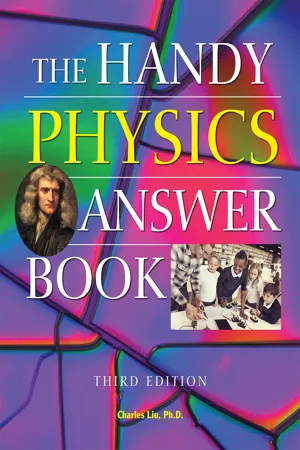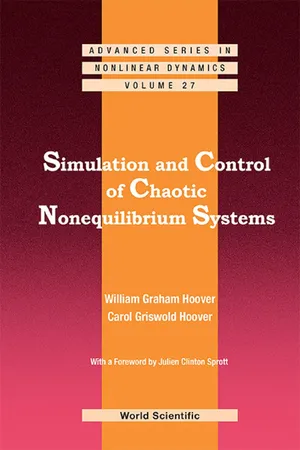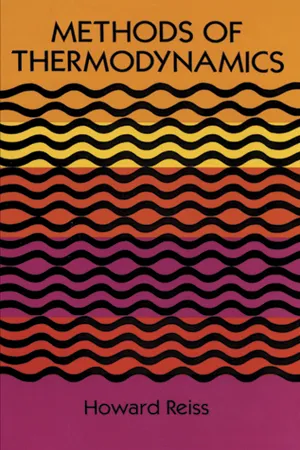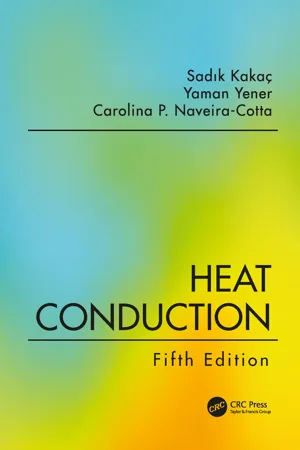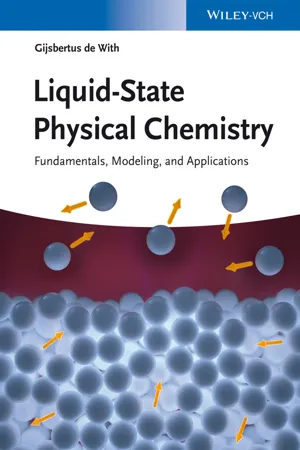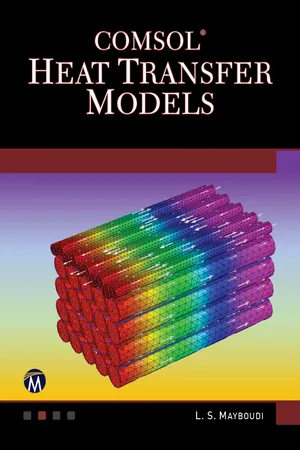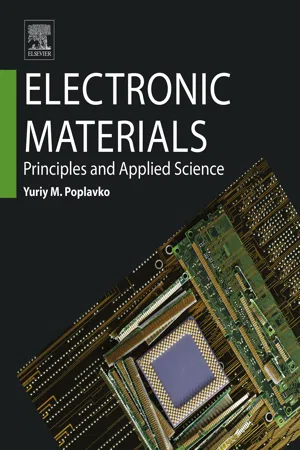Physics
Thermal Physics
Thermal physics is the study of heat and temperature and their effects on matter. It explores the behavior of atoms and molecules in response to thermal energy, as well as the transfer of heat through various processes such as conduction, convection, and radiation. This field also encompasses the laws of thermodynamics, which govern the behavior of thermal systems.
Written by Perlego with AI-assistance
Related key terms
Related key terms
1 of 4
Related key terms
1 of 3
11 Key excerpts on "Thermal Physics"
- eBook - ePub
The Thermal Human Body
A Practical Guide to Thermal Imaging
- Kurt Ammer, Francis Ring(Authors)
- 2019(Publication Date)
- Jenny Stanford Publishing(Publisher)
Chapter 2Basic Thermal Physics: Heat Exchange and Infrared RadiationThis chapter is dedicated to basic Thermal Physics, including definitions of temperature and heat energy. The Laws of Thermodynamics define energetic relationships within thermodynamically closed (no material exchange) and isolated structures (no material or energy exchange). Although living beings are rarely (if ever) in those states, these laws still apply, and provide the scientific foundation for understanding temperature measurement. They also define the principles of heat transfer. The description of the principles of heat transfer follows closely Chapter 2 of the book Human Body Temperature, by Y Houdas and EFJ Ring.2.1What Is Temperature?Thermodynamic temperature is one of seven basic quantities which together with length, mass, time, electric current, amount of substance and light intensity is used to generate the basics of the measurement and dimension system of physics [1 , 2 ]. Units of physics, necessary to understand the mechanisms involved in heat transfer are listed in Table 2.1 . This list is based on the SI Units [2 ]. The base unit temperature is an intensive quantity of heat energy. A physical property of a system that does not depend on the system size or the amount of material in the system is called intensive. Although temperature represents the mean kinetic energy of atoms or molecules in a substance, temperature is not the same as heat.Table 2.1Système Internationale (SI): basic units [2 ]Table 2.2Systeme Internationale (SI): coherent derived Units [2 ]Table 2.3SI prefixes [2 ]2.1.1Thermodynamic TemperatureThe unit of thermodynamic temperature is the kelvin. One kelvin is the fraction 1/273.16 of the thermodynamic temperature of the triple point of water. This definition was supplemented in 2005 by the description of the isotopic composition of water, exactly defined by the amount of substance ratios. The triple point - eBook - ePub
- Charles Liu(Author)
- 2020(Publication Date)
- Visible Ink Press(Publisher)
THERMODYNAMICS
What is thermodynamics?
Thermodynamics is the study of the change of thermal energy in objects and materials that makes them warm and cold, how they interact with each other, and the relationship between energy, heat, and work. It can be a challenging area of physics, in part because most of the vocabulary dates from the time before scientists understood what makes an object hot. Terms like “heat,” “heat capacity,” and “latent heat” suggest that warm objects contain some material that reacts to temperature. It wasn’t until the early 1800s that our present understanding started to develop. Some 200 years later, our common usage of these terms is still based on earlier ideas.What is thermal energy?
Thermal energy is the random kinetic energy of the moving particles—such as atoms and molecules—that make up matter. Objects expand when heated, so the bonds holding the particles together stretch. That means they have more elastic energy. So, thermal energy is the sum of the kinetic and elastic energy of the atoms and molecules and the bonds that hold them together. It is energy that is inside the object, so it is called a form of internal energy.Thermal Physics
Who discovered what makes an object hot?
Benjamin Thompson, Count Rumford (1753–1814), who was born in the Massachusetts Bay Colony but did most of his scientific work in the Kingdom of Bavaria (which is now part of Germany), deserves a great deal of credit in discovering what makes things hot. Before his experiments, most scientists thought that hot objects contained an invisible fluid called caloric. Experiments done before Rumford showed that when you heated an object it didn’t gain weight, so caloric must be weightless as well as invisible. This result made many scientists suspicious of the caloric explanation.In 1789 Rumford drilled holes in bronze cannons through which a cannonball would be shot. He found that both the cannon and the metal chips that resulted from the drilling became hot. He determined the amount of water that could be raised to the boiling point by both the cannon bodies and the chips and showed that the caloric theory did not agree with his results. He finally concluded that in hot objects, the particles that made up the material moved faster than they moved in cold objects. Using our present terminology, they had more kinetic energy. In their motion they vibrate back and forth; they do not move together from one place to another like a thrown ball. - eBook - ePub
Simulation and Control of Chaotic Nonequilibrium Systems
With a Foreword by Julien Clinton Sprott
- William Graham Hoover, Carol Griswold Hoover(Authors)
- 2015(Publication Date)
- WSPC(Publisher)
Chapter 3Thermodynamics, Statistical Mechanics, and Temperature
TopicsThermodynamics and Ideal-Gas Temperature / Thermodynamics of the Classical Ideal Gas / Laws of Thermodynamics / Zeroth Law / The First Law / The Paradoxical Second Law / Temperature from Entropy / Jaynes’ Idea / Nosé’s Idea / Gibbs’ Canonical Ensemble / Configurational Temperature / Temperature from Kinetic Theory, the Ideal-Gas Thermometer / Tensor Temperature with Hard Parallel Cubes /3.1Thermodynamics and Ideal-Gas Temperature
Mechanics (or dynamics) describes the displacements and the motions of matter responding to forces. The models considered range from atomistic to astrophysical in size. Thermodynamics is quite different. Thermodynamics is a macroscopic study of the the mechanical and thermal state changes undergone by matter. It is sometimes called thermostatics to distinguish its subject matter from fluid dynamics, solid mechanics, and hydrodynamics. “Thermostatics” emphasizes the slow speed of thermodynamic motions, so slow relative to the sound speed that the states considered are equilibrium states. In addition to mechanical forces, which can do work and change energy by compression, expansion, or shear, thermodynamics also includes temperature variations, along with the flow of heat in response to these temperature differences. Thus the concepts necessary to undertaking thermodynamic “thought experiments” and analyses include temperature and heat reservoirs in addition to mechanical tools like frictionless pistons and smooth indentors.Statistical mechanics furnishes a bridge between atomistic mechanics and macroscopic thermodynamics. “Statistical” indicates averaging over the many microscopic (q, p) coordinate-momentum states consistent with a single macroscopic (P, V, E) pressure-volume-energy state. A new temperature-based state function, Entropy, is specially useful in interconnecting macroscopic thermodynamics with microscopic statistical mechanics. Thermodynamics is based on Laws more comprehensive than those of mechanics. These Laws are the fruits of experience, and can be applied to a wide variety of models of matter. The models need to have well-defined reproducible “states”. These states are characterized by the macroscopic properties, pressure, density, energy, temperature, …. Describing solids can require additional mechanical descriptors such as dislocation density, locked-in stresses, and void fractions. Because thermodynamics includes temperature among the state variables, a means of measurement is necessary, a thermometer - eBook - ePub
- Howard Reiss(Author)
- 2012(Publication Date)
- Dover Publications(Publisher)
ISome General Concepts
1. Objectives of Thermodynamics
Throughout this book, it will be assumed that the reader has had rudimentary thermodynamic training such as one might acquire in an elementary course in physical chemistry. In later chapters, we shall take time to define fundamental parameters such as temperature, surface tension, et cetera, whose aggregate forms the discipline of thermodynamics; but for the moment, we shall deal with the subject discursively rather than rigorously, assuming that the reader has some familiarity with these concepts. Later we shall deal with these same subjects more thoroughly.Thermodynamics deals with the properties of matter in bulk. Although we know that matter is composed of elementary particles and may have a detailed organized structure, we cannot call upon this information for the purpose of thermodynamic reasoning. This does not mean that it is not possible nor desirable to use extra-thermodynamic information in conjunction with thermodynamic methods, but only that one should be careful to isolate thermodynamic from nonthermodynamic reasoning, especially because those relationships which have been established by means of thermodynamics will be invariant to all changes in our concepts of atomic and molecular phenomena. We shall refer to systems of matter in bulk as macroscopic, whereas atoms and molecules constitute microscopic systems.At this point in time, one is usually willing to place a very high level of confidence in conclusions arrived at by thermodynamic means. Actually, there are not many things in this world which come to us bound with immutable fact; and therefore, we are led to suspect that there are not many things which can be known by thermodynamics alone. This is true. To make thermodynamics useful, it will be necessary to feed a great deal of information into its mechanisms. Our profit will be other facts which might have been obtained through the agency of additional measurement. This is one of the major services of thermodynamics—the avoidance of redundant measurements among macroscopic variables. For example, suppose that the coefficient of thermal expansion, the isothermal compressibility, the heat capacity at constant volume, and the temperature and volume of a substance have been measured. It will then prove unnecessary to measure its heat capacity at constant pressure, for thermodynamics reveals that the heat capacity is entirely determined by the former quantities. In another example, suppose that the latent heat of vaporization of a liquid and the heat capacities of both the liquid and its vapor have been measured. If the vapor pressure is known at one temperature, it becomes possible to specify its value at other temperatures through the application of thermodynamic methods. - eBook - ePub
- Sadık Kakac, Yaman Yener, Carolina P. Naveira-Cotta(Authors)
- 2018(Publication Date)
- CRC Press(Publisher)
1 Foundations of Heat Transfer 1.1 Introductory Remarks Heat transfer is that branch of engineering science which studies the transfer of energy solely as a result of temperature differences. Heat transfer problems confront engineers and researchers in nearly every branch of engineering and science. Although it is generally regarded as most closely related to mechanical engineering, much work in this field has also been done in chemical, nuclear, metallurgical, and electrical engineering, where heat transfer problems are equally important. It is probably this fundamental and widespread influence that has helped the field of heat transfer develop as an engineering science. Thermodynamics, another branch of the engineering science, studies heat and work interactions of a system with its surroundings, and defines heat as the form of energy that crosses the boundary of a system by virtue of a temperature difference existing between the system and its surroundings. That is, heat is the energy in transition across the system boundary and temperature difference is the driving potential for its propagation. Since heat is energy in transit, one should really talk about the transfer or flow of heat. Heat flow is vectorial in the sense that it is in the direction of a negative temperature gradient, that is, from higher toward lower temperatures. The laws of thermodynamics may be used to predict the gross amount of heat transferred to or from a system during a process in which the system goes from one thermodynamic state (i.e., mechanical and chemical, as well as thermal equilibrium) to another. In most instances, however, the overriding consideration may be the time period over which the transfer of heat occurs or, simply, the time rate at which it takes place. The laws of thermodynamics alone are not sufficient to provide such information; neither can they explain the mechanisms of heat transfer, which are not strictly restricted to equilibrium states - eBook - ePub
Liquid-State Physical Chemistry
Fundamentals, Modeling, and Applications
- Gijsbertus de With(Author)
- 2013(Publication Date)
- Wiley-VCH(Publisher)
2 Basic Macroscopic and Microscopic Concepts: Thermodynamics, Classical, and Quantum MechanicsIn the description of liquids and solutions, we will need macroscopic and microscopic concepts that we do not consider as part of the subject proper but still are prerequisite to our topic. For macroscopic considerations, we will need phenomenological thermodynamics, and Section 2.1 presents a brief review of this. For microscopic considerations, we introduce in Section 2.2 some concepts from classical mechanics, and in Section 2.3 basic quantum mechanics and a few model system solutions. For further details of these matters, reference should be made to the books in the section “Further Reading” of this chapter, of which free use has been made.2.1 Thermodynamics
Thermodynamic considerations are basic to many models and theories in science and technology, and in this section the phenomenological aspects of thermodynamics are briefly described but less briefly as in the summary given by Clausius [1]:- Die Energie der Welt is constant.
- Die Entropie der Welt strebt einem Maximum zu1) .
2.1.1 The Four Laws
Thermodynamics is based on four well-known basic laws2) . In order to describe these, we start with a few concepts. In thermodynamics the part of the physical world that is under consideration (the system) is for the sake of analysis considered to be separated from the rest (the surroundings). The thermodynamic state of the system is assumed to be determined completely by a set of macroscopic, independent coordinates ai (also labeled a)3) and one “extra” parameter related to the thermal condition of the system. For this parameter one has several choices, one of which is the most appropriate and to which we return later. Together, these constitute the set of state variables. Intensive (extensive) variables are independent of (dependent on) the size and/or quantity of the matter contained in the system. When a new set of state variable values is applied, the system adapts itself via internal processes, collectively characterized by the internal variables ξi (or ξ). When the properties of a system do not change with time at an observable rate given certain constraints, the system is said to be in equilibrium. Thermodynamics - eBook - ePub
- Layla S. Mayboudi(Author)
- 2019(Publication Date)
- Mercury Learning and Information(Publisher)
CHAPTER 3 H EAT T RANSFER AND F LOW T HERMAL S CIENCES Heat transfer modeling is founded on the principles of thermodynamics. This science focuses on the motion of particles making up the matter stimulated by the heat that causes a change of internal energy and its manifestation as heat or work. For example, if a hot-air balloon is filled with hot gases, its envelope keeps pushing its boundaries to the point that it cannot expand anymore. The process of energizing the molecules has first caused the process of expansion (work) and then exciting the molecules to go beyond expanding the envelope, to lift the balloon and keep it floating. In thermodynamics, the four laws are as follows: (1) the zeroth law—two bodies, each in equilibrium with the third body, are in equilibrium with one another; (2) the first law—internal energy of bodies remains constant; (3) the second law—entropy of the universe increases over time and its changes cannot be negative for any given system; and (4) the third law—entropy of a body approaches zero when its temperature approaches absolute zero. The term body used in this context is interchangeable with system, since both define a cluster of molecules with the equation of states ruling over them [ 97 ]. Interacting forces within fluids (e.g., gases, liquids, and plasmas) are governed by fluid mechanics. This is also known as the third law of Newtonian mechanics, sometimes called the action-reaction law —for every action, there is a reaction equal in magnitude which is in the opposite direction. Fluid mechanics is further categorized into fluid statics and dynamics, based on the temporal status of the fluid molecules—the former relating to stationary (equilibrium state) and the latter to transient systems. An example where statics is applicable is the variation of the atmospheric pressure with altitude - eBook - ePub
- Tao Deng(Author)
- 2018(Publication Date)
- Wiley-VCH(Publisher)
This introductory chapter encompasses the basic principles and calculation methods for the heat transfer process and the advanced thermal properties. Various thermal applications of bioinspired functional materials will also be briefly discussed. To elucidate the basic principles of thermal theory, several analytical examples involving heat source and boundary conditions, uniform and nonuniform mesh structures, multiphase transfer, phase change, and convection in fluidic cases are also described. Noticing that micro/nanoscale materials exhibit unique thermal properties in modern materials scientific research, in this chapter the new developments in micro/nanoscale heat transfer theory are also discussed and some of the theoretic solutions drawn in calculating the thermal conductivity of micro/nanomaterials are shown. Biological systems set numerous examples in teaching humans how to collect, convert, and harness thermal energy from nature. In the last section of this chapter, practical approaches are discussed in an overview of bioinspired thermal materials. Typical thermal applications of functional materials (e.g., thermal nanofluids such as nanosuspension of colloidal particles in solution, the rapid charging of thermal energy storage, the phase change energy conversion by photothermal membrane, and the sensing of infrared radiation by bioinspired materials) are presented to show how the modern conventional and micro/nano heat transfer theory is related to advanced thermal functions of bioinspired materials.1.1 Conventional Macroscale Heat Transfer
Heat transfer forms a vital kinetic force in the maintenance of the basic energy operation of the whole natural system for the activities of all the creatures on earth. As an engineering discipline, the inherent laws of heat transfer do not merely explain the way of energy transportation but also deal with the thermodynamics of both objects and the equilibrium principle under specified conditions. Fundamental learning of the equilibrium principle is provided by the first and second laws of thermodynamics, and follows the classic mechanics of conduction, convection, and radiation. In the following sections, the conduction, convection, and radiation of macroscale heat transfer problems will be shown and the working principles formulated by energy equations. In Thermal Physics and engineering problems, we use critical quantitative criteria to characterize the thermal properties of material. These thermal properties are modified as representations of thermal energy transportation and energy conservation models, and can be used to analytically or numerically solve problems in thermal engineering and nature. Therefore, in the following sections, the basic principles of thermal transfer will be introduced first through a discussion of the thermal energy transportation and energy conservation models. - eBook - ePub
- Michael M. Mansfield, Colm O'Sullivan(Authors)
- 2020(Publication Date)
- Wiley(Publisher)
11 Thermal PhysicsAIMS
- to introduce the kelvin, the SI unit of thermodynamic temperature
- to investigate the connection between the amount of mechanical energy generated in a body by friction and the corresponding change in its temperature
- to study the phenomena of thermal conduction, convection, radiation and expansion
- to develop a formalism (called thermodynamics) to describe the macroscopic behaviour of systems when their temperature changes and, simultaneously, mechanical work is done by the system on the surroundings or vice versa
- to study transformations (fusion and vaporisation) between different phases of matter
11.1 Friction and heating
We saw in Chapter 5 that mechanical energy is conserved only in the absence of friction. In Worked Example 5.3, for example, it was found that the loss of mechanical energy by a body sliding down a rough inclined plane increases linearly with distance travelled along the plane. Investigation of systems like these, in which friction‐like forces are involved, reveals a further general observation, namely that loss of mechanical energy due to friction is always accompanied by the production of heat in the system. Furthermore, it is observed that the greater the loss of mechanical energy the hotter the system becomes.We have used terms such as ‘production of heat’ and ‘the hotter the system becomes’ in a rather loose and non‐scientific way. These somewhat colloquial terms correspond loosely to particular physical quantities; one of our first tasks in this chapter will be to define such physical quantities so that we can develop a formalism which will enable the quantitative study of thermal systems to be undertaken. Two distinct concepts will be introduced, namely: (1) the idea of a body getting ‘hotter’ (or ‘colder’) will be described as an increase (or decrease) of temperature, and (2) the taking in or release of ‘heat’ will be associated with a change of the energy content of the body. - eBook - ePub
Electronic Materials
Principles and Applied Science
- Yuriy M. Poplavko(Author)
- 2018(Publication Date)
- Elsevier(Publisher)
Chapter 3Thermal properties of solids
Abstract
The thermal properties of materials are attributable to the internal energy of the crystal lattice (formed by atoms, ions, and electrons). The physical nature of potential and kinetic energy in solids as well as their enthalpy, entropy, and Helmholtz free energy was previously considered. Next, the thermal expansion of crystal as a feature of the internal connections of atoms is described: it depends on the peculiar properties of interatomic bonds. In noncentrosymmetric crystals, the coefficient of thermal expansion shows a pronounced anisotropic character and could even be negative. This is followed by a discussion on the physical nature of heat capacity (and, closely related to it, specific heat). The law of the heat-capacity constancy (Dulong-Petit law) is explained on the basis of conventional theories; next, Einstein's and Debye's quantum theories are considered in simplified form. Finally, the peculiarities of thermal conductivity in metals, semiconductors, and dielectrics are described. The laws governing the transfer of heat by electrons, phonons, and other quasiparticles are explained.Keywords
Specific heat; Dulong-Petit law; Einstein's theory of heat capacity; Debye's theory of heat capacity; Thermal expansion; Thermal conductivityContents- 3.1 Basic Thermal and Energy Relationships
- 3.2 Thermal Expansion of Solids
- 3.3 Crystal Heat Capacity
- 3.4 Thermal Conductivity of Solids
- 3.5 Summary
- References
Many phenomena and effects of electronic materials could be attributed to their thermal properties—thermal motion determines important features in electrical, magnetic, and other properties. Beginning with the synthesis of crystals and microelectronic as well as nanosized structures and, next, their alloying, annealing, and quenching, there are many other technological operations that occur under special thermal conditions. Thermal energy determines many properties of crystals. For example, the generation and recombination of charge carriers as well as the setting of their equilibrium concentration in semiconductors are due to thermal motion in the lattice. In magnets and dielectrics , phase transitions of dielectric-metal as well as transitions in ferromagnetic or ferroelectric states and observable phenomena such as pyroelectricity, electrocaloric effect, magnetic cooling, thermostriction, and so on are directly related to thermal properties. However, all listed phenomena will be considered in subsequent sections of this book, whereas this chapter is devoted only to three thermal phenomena in solids: specific heat , thermal expansion , and thermal conductivity - eBook - ePub
Reliability Technology
Principles and Practice of Failure Prevention in Electronic Systems
- Norman Pascoe(Author)
- 2011(Publication Date)
- Wiley(Publisher)
Chapter 4 Heat Transfer – Theory and Practice Science is built up of facts, as a house is built of stones; but an accumulation of facts is no more a science than a heap of stones is a house. Science and Hypothesis (1950 ch. 9) 4.1 Overview An understanding of the physical mechanisms involved in the transfer of heat within a material and from one material to another is an essential attribute for the design of reliable electronic hardware. The material contained within this chapter will, hopefully, also help to provide a clearer understanding of the principles of heat transfer that make such an important contribution to the development of effective reliability growth programmes. In order to generate realistic thermal stresses, and stimulate effective thermal responses within electronic hardware for the purpose of achieving effective qualification, accelerated ageing, and Stress Screening objectives, the essential physics of heat transfer and thermomechanical ageing must be properly understood. This chapter deals with the basic principles of heat transfer and temperature measurement for those design, test, and reliability engineers who seek to strengthen their understanding of the influence of cyclic thermomechanical behaviour on product robustness and durability. The thermal management of electronic hardware, and the forced stimulation of cyclic thermomechanical stress reversals within electronic hardware, are treated as two distinctly different topics of concern. There are two fundamentally different concepts associated with the transfer of heat: 1. Thermodynamics which addresses the amount of heat that is transferred when a system undergoes a transition from one equilibrium state to another. The time taken for this transition to occur is of no academic consequence. Thermodynamic principles form the basis for the design of thermal chambers used for testing product at high and low temperatures
Index pages curate the most relevant extracts from our library of academic textbooks. They’ve been created using an in-house natural language model (NLM), each adding context and meaning to key research topics.
Explore more topic indexes
Explore more topic indexes
1 of 6
Explore more topic indexes
1 of 4

